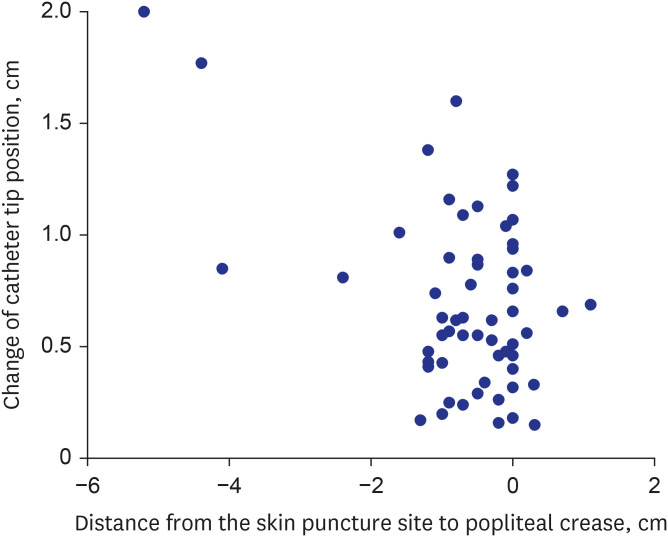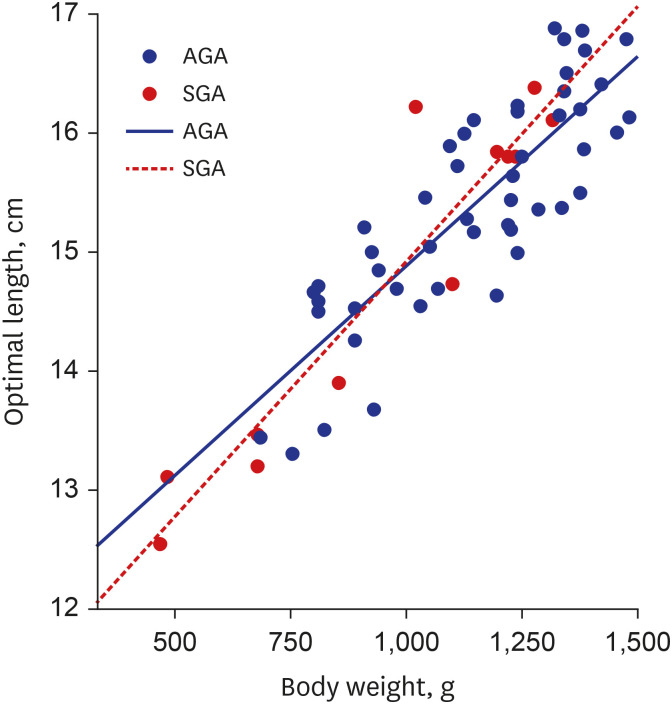1. Gavelli V, Wackernagel D. Peripherally inserted central catheters in extremely preterm infants: Placement success rates and complications. Acta Paediatr. 2022; 111(3):554–556. PMID:
34757656.
2. Kim H, Kim SH, Byun HS, Choi YY. Clinical use and complications of percutaneous central venous catheterization in very low birth weight infants. Korean J Pediatr. 2005; 48(9):953–959.
3. Huang HC, Su LT, Liu YC, Chang HY, Ou-Yang MC, Chung MY, et al. The role of ultrasonography for detecting tip location of percutaneous central venous catheters in neonates-a single-center, prospective cohort study. Pediatr Neonatol. 2021; 62(3):265–270. PMID:
33637475.
4. Lee ES, Lee YH, Shin SM. Clinical experiences on PCVC (pereutaneous central venous cathetization) in newborn infants. J Korean Soc Neonatol. 1995; 2(1):34–41.
5. Lee J, Kim M, Cho CY, Choi YY. Effects of percutaneous central venous catheterization in very low birth weight infants. J Korean Soc Neonatol. 2000; 7(2):81–88.
6. Soong WJ, Hwang B. Percutaneous central venous catheterization: five year experiment in a neonatal intensive care unit. Zhonghua Min Guo Xiao Er Ke Yi Xue Hui Za Zhi. 1993; 34(5):356–366. PMID:
8237354.
7. Thiagarajan RR, Ramamoorthy C, Gettmann T, Bratton SL. Survey of the use of peripherally inserted central venous catheters in children. Pediatrics. 1997; 99(2):E4.
8. Sung SI, Ahn SY, Seo HJ, Yoo HS, Han YM, Lee MS, et al. Insensible water loss during the first week of life of extremely low birth weight infants less than 25 gestational weeks under high humidification. Neonatal Med. 2013; 20(1):51–57.
9. Kristoff K, Wang R, Munson D, Dysart K, Stracuzzi L, Wade K, Birnbaum S. A quality improvement initiative to provide timely central vascular access in a neonatal intensive care unit. Adv Neonatal Care. 2022; 22(3):203–209. PMID:
34407057.
10. Alhatem A, Estrella Y, Jones A, Algarrahi K, Fofah O, Heller DS. Percutaneous route of life: chylothorax or total parenteral nutrition-related bilateral pleural effusion in a neonate? Fetal Pediatr Pathol. 2021; 40(5):505–510. PMID:
32000556.
11. Colacchio K, Deng Y, Northrup V, Bizzarro MJ. Complications associated with central and non-central venous catheters in a neonatal intensive care unit. J Perinatol. 2012; 32(12):941–946. PMID:
22343397.
12. Nadroo AM, Glass RB, Lin J, Green RS, Holzman IR. Changes in upper extremity position cause migration of peripherally inserted central catheters in neonates. Pediatrics. 2002; 110(1 Pt 1):131–136. PMID:
12093958.
13. Chen H, Zhang X, Wang H, Hu X. Complications of upper extremity versus lower extremity placed peripherally inserted central catheters in neonatal intensive care units: A meta-analysis. Intensive Crit Care Nurs. 2020; 56:102753. PMID:
31445794.
14. Dhillon SS, Connolly B, Shearkhani O, Brown M, Hamilton R. Arrhythmias in children with peripherally inserted central catheters (PICCs). Pediatr Cardiol. 2020; 41(2):407–413. PMID:
31853581.
15. Perin G. PICC placement in the neonate. N Engl J Med. 2014; 370(22):2153–2154.
16. Finn D, Kinoshita H, Livingstone V, Dempsey EM. Optimal line and tube placement in very preterm neonates: an audit of practice. Children (Basel). 2017; 4(11):99. PMID:
29149032.
17. Chen IL, Ou-Yang MC, Chen FS, Chung MY, Chen CC, Liu YC, et al. The equations of the inserted length of percutaneous central venous catheters on neonates in NICU. Pediatr Neonatol. 2019; 60(3):305–310. PMID:
30217481.
18. Kim JH, Kim CS, Bahk JH, Cha KJ, Park YS, Jeon YT, et al. The optimal depth of central venous catheter for infants less than 5 kg. Anesth Analg. 2005; 101(5):1301–1303. PMID:
16243984.
19. Mussa B. Advantages, disadvantages, and indications of PICCs in inpatients and outpatients. Sandrucci S, Mussa B, editors. Peripherally Inserted Central Venous Catheters. Milano, Italia: Springer;2014. p. 43–51.
20. Ohki Y, Nako Y, Morikawa A, Maruyama K, Koizumi T. Percutaneous central venous catheterization via the great saphenous vein in neonates. Acta Paediatr Jpn. 1997; 39(3):312–316. PMID:
9241891.
21. O’Grady NP, Alexander M, Burns LA, Dellinger EP, Garland J, Heard SO, et al. Summary of recommendations: guidelines for the prevention of intravascular catheter-related infections. Clin Infect Dis. 2011; 52(9):1087–1099. PMID:
21467014.
22. Wrightson DD. Peripherally inserted central catheter complications in neonates with upper versus lower extremity insertion sites. Adv Neonatal Care. 2013; 13(3):198–204. PMID:
23722492.
23. Elmekkawi A, Maulidi H, Mak W, Aziz A, Lee KS. Outcomes of upper extremity versus lower extremity placed peripherally inserted central catheters in a medical-surgical neonatal intensive care unit1. J Neonatal Perinatal Med. 2019; 12(1):57–63. PMID:
30149479.
24. Kwak KJ, Park JH, Choi HJ, Kim CS, Lee SL. Early-onset pericardial effusion after peripherally inserted central venous catheterization in a preterm infant. Korean J Perinatol. 2015; 26(4):355.
25. Ateş Y, Yücesoy CA, Unlü MA, Saygin B, Akkaş N. The mechanical properties of intact and traumatized epidural catheters. Anesth Analg. 2000; 90(2):393–399. PMID:
10648328.








 PDF
PDF Citation
Citation Print
Print




 XML Download
XML Download